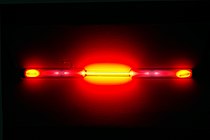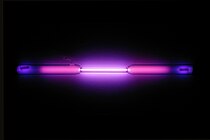Group 18: Noble gases ( Periodic Table#8 )
- Helium
- Neon
- Argon
- Krypton
- Xenon
- Radon
Noble gases are typically highly unreactive except when under particular extreme conditions. The inertness of noble gases makes them very suitable in applications where reactions are not wanted. For example: argon is used in lightbulbs to prevent the hot tungsten filament from oxidizing; also, helium is breathed by deep-sea divers to prevent oxygen and nitrogen toxicity.
The melting and boiling points for a given noble gas are close together, differing by less than 10 °C (18 °F); that is, they are liquids over only a small temperature range.
Obtaining techniques
- Neon, argon, krypton, and xenon are obtained from air in an air separation unit using the methods of liquefaction of gases and fractional distillation.
- Helium is sourced from natural gas fields which have high concentrations of helium in the natural gas, using cryogenic gas separation techniques.
- Radon is usually isolated from the radioactive decay of dissolved radium compounds.
Noble gases have several important applications in industries such as lighting, welding, and space exploration. A helium-oxygen breathing gas is often used by deep-sea divers at depths of seawater over 55 m (180 ft) to keep the diver from experiencing oxygen toxemia, the lethal effect of high-pressure oxygen, and nitrogen narcosis, the distracting narcotic effect of the nitrogen in air beyond this partial-pressure threshold. After the risks caused by the flammability of hydrogen became apparent, it was replaced with helium in blimps and balloons.
 |
| Helium (He) 2 |
 |
| Neon (Ne) 10 |
 |
| Argon (Ar) 18 |
 |
| Krypton (Kr) 36 |
 |
| Xenon (Xe) 54 |
 |
| Radon (Rn) 86 |
INFORMATION CREDIT: wikipedia.org
chemicalelements.com
IMAGE CREDIT: wikipedia.org

Comments
Post a Comment